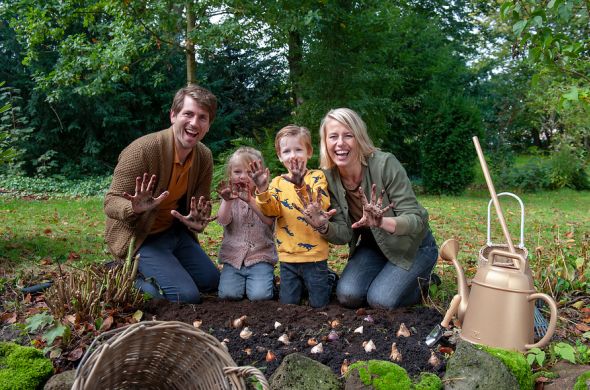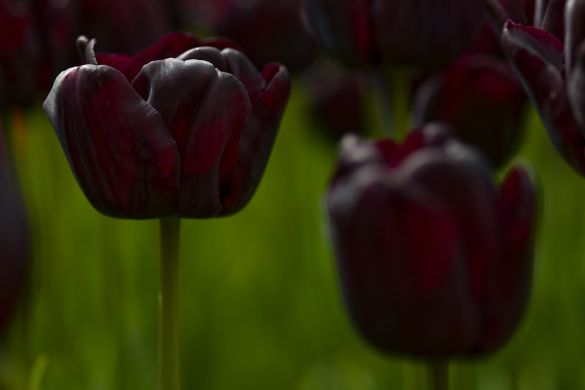Flower bulbs make you bloom

It’s that time of year again – time to plant flower bulbs.
Thinking already about enjoying a colorful spring garden? If so, fall is the right time to plant flower bulbs. Actually, the fun starts with popping them into the ground.
Strong roots
Planting flower bulbs in the fall might seem a bit odd. After all, it’s the end of the gardening season. But getting the most out of spring means taking the time to find a spot for them now. The months between planting and flowering give bulbs enough time to develop their roots. The earlier the roots are produced, the stronger they become. So what are you waiting for? And it’s fun, too!
Nice memories
But it’s not just the flowers that bring so much joy – the whole process from planting to flowering is gratifying. So why not enjoy it right along with your significant other, kids or – think mindfulness – just by yourself? You’re about to find out that selecting, buying and planting flower bulbs leads to some nice memories. The excitement only grows when you spot the first green leaves emerging from the ground. Then it won’t be long before you’ll be experiencing all the joy of a garden exploding with color.
The black tulip

The most popular flower bulb of all has to be the tulip. Did you know that tulip varieties are classified into 15 groups? This is done depending on their shape, origins and flowering period. The most famous tulip – Queen of Night – belongs to the group known as ‘Single Late’ tulips. Its fame is due to the centuries spent trying to find a truly black tulip. Although yet to be found, Queen of Night is so deep purple that it comes very close.
Kinds of flower bulbs
Did you know that flower bulbs are the first plants to add color to gardens in the spring? And the earliest of these are snowdrops, crocuses and daffodils. Besides the familiar tulip, many other cheerful harbingers of spring can pretty up your garden. Daffodils, hyacinths, crocuses, grape hyacinths and irises to name a few. Some of the less familiar kinds such as ornamental onions, glory-of-the-snow, spring starflowers, checkered fritillary and striped squill could also beautify your garden.

Tips:
Use a marker to identify the spot where you’ve planted the flower bulbs so you’ll know exactly where they will come up. Isn’t it wonderful to be able to watch nature’s little miracles taking place right in your own garden?
Plant flower bulbs three times as deep as the size of the bulb. This way, there will be exactly enough soil on top of the flower bulb to let it grow properly.
Flower bulbs need cold temperatures to grow as they should. But did you know that flower bulbs can protect themselves from frost? They do this by transforming their starches into sugars. As luck would have it, flower bulbs contain very large quantities of starch.
Spring-flowering bulbs can be planted from September to the end of December. Just be sure to plant them before the soil freezes.
And avoid planting them in places where rainwater collects on the surface such as at the foot of a hill or at the bottom of a drainpipe. This is because flower bulbs that stand in water too long have a greater chance of drowning due to a lack of oxygen.
Would you like to know more about flower bulbs? Then take a look at flowerbulbs.com
